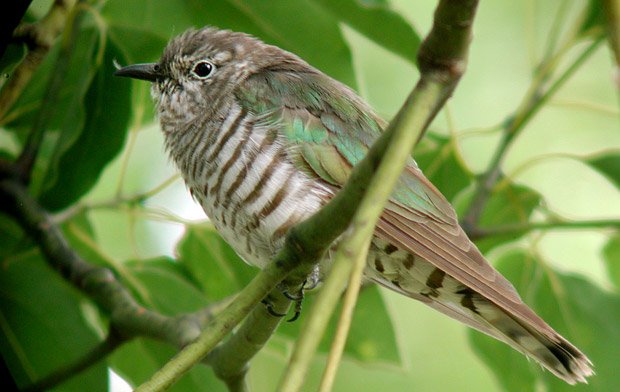Tracking tweets in the wild made easier

NEW TECHNOLOGY IS HELPING scientists eavesdrop on native bird twitter by doing away with the need for constant human surveillance.
A team at the Queensland University of Technology has designed automated acoustic sensors that can track changes in bird species over time, making the job easier for researchers chasing birds in the bush.
Keeping tabs on how native bird species respond to climate change is no easy feat. Bird watchers often devote days to the task, straining their eyes and ears in remote, inhospitable terrain to monitor their feathered subjects.
But QUT PhD student Jason Wimmer says using sensors could save the expense of sending an expert into the field and makes it possible to monitor bird calls 24 hours a day, “night after night, week after week.”
“You can catch the calls of birds that only come out at night – rare birds that might only call once or twice a day, birds that are just passing through, or birds that won’t call while there’s an observer in the field,” he told Australian Geographic.
So far, trials have shown sensors can detect roughly twice as many species as do the trained experts conducting traditional surveys in the same location.
The technology has already been used in Queensland to record the call of the rarely-sighted Lewin’s rail (Lewinia pectoralis), a threatened species in some Australian states. Jason also aims to use sensors to monitor the powerful owl (Ninox strenua) as well as other threatened native species.
Polly wants a tracker
The sounds recorded in the bush by the automated acoustic sensors are transmitted to an online digital library for analysis.
“The software filters through the audio and isolates the parts where it can identify potential species amid the cacophony,” says Jason.
It is then up to experts to identify the number and types of birds in the recording. Jason hopes that by speeding up the collection and analysis of the data, ecologists will get a more current snapshot of how climate change impacts biodiversity.
“Birds are indicator species which are sensitive to changes in the environment. If we can find out if there are changes going on in the composition of species, we can respond quickly to ecological alarm bells,” he says.
Dean Ingwersen, woodland birds project officer at Birds Australia, says the sensor technology could be used to monitor migratory birds such as the shining bronze-cuckoo (Chrysococcyx lucidus), which arrives in Australia’s southern reaches to breed every spring.
“Already we’ve seen evidence that some migratory species are changing their date of arrival, or are delaying their departure, because of climate change,” Dean says. “But if you’ve got sensors at the remote locations where the birds arrive, you can look at the data from when they first fly in and you don’t have to send someone out there.”
Cane toad text messages
But acoustic sensors aren’t only being used to track birds; they have also been deployed on St Bees Island near McKay to monitor Koalas, and on Groote Eylandt in the Gulf of Carpentaria, Jason says, to protect the native quoll population from potential cane toad invasion.
The island currently has no pest species and the series of automated acoustic sensors installed around the port aim to keep it that way.
“If [the sensor] detects a cane toad call, it sends a series of text messages out to different people. So if a cane toad hops off the barge and escapes, we’re confident we’d hear it,” says Jason.
Jason’s goal is to eventually set up sensors across Australia, continuously streaming live data about how native species are faring in each different ecosystem.
RELATED STORIES

